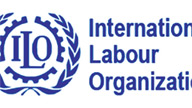MDGs and beyond: An ILO perspective
The goal of reducing extreme poverty rates by half under MDG
(Millennium Development Goals) 1 was reached in 2010, five years ahead
of deadline.
 By 2011 the number of workers living on US$ 1.25 a day had reduced by
294 million compared to 2001. Progress was strong in developing
countries in East and South-East Asia and Latin America. By 2011 the number of workers living on US$ 1.25 a day had reduced by
294 million compared to 2001. Progress was strong in developing
countries in East and South-East Asia and Latin America.
However, much work remains to be done. 1.2 billion people still live
in extreme poverty around the world, while 2.4 billion live on less than
US$ 2 a day. Moving towards poverty eradication remains a top priority
for the UN. This needs efforts to achieve stable, inclusive and job-rich
economic growth.
Recognition that work and income is the principle route out of
poverty led to the inclusion of a target under MDG1 on achieving full
and productive employment and decent work for all.
The financial crisis followed by the Great Recession have hampered
progress in this area and today over 200 million people remain
unemployed worldwide, 75 million of whom are young people.
Some 670 million new jobs will be needed in the fifteen years from
2015 to 2030, to keep up with the growth of the world's working age
population. But to make a difference in the lives of working women and
men, we have to make sure that these jobs are decent and productive.
How has the ILO responded to the challenges presented by the global
financial crisis?
Aurelio Parisotto: Poverty and hunger will not be eradicated without
creating decent and productive jobs in substantial numbers and put
simply that's what the ILO advocates for.
ILO knowledge derived from project experience on the ground and
research and analysis in areas essential to poverty reduction have
helped inform policy decisions at national levels before and since the
crisis.
At the peak of the global financial crisis, governments and employer
and worker organizations of the ILO's member states agreed on a
framework of action to promote a jobs rich crisis recovery.
The 2009 Global Jobs Pact provides a range of tested crisis-response
and recovery measures that focus on employment and social protection.
Countries that implemented Jobs Pact like policies have fared better in
recovering from the crisis. Nations in Latin America and Asia for
example first addressed the structural factors underlying poverty and
underemployment.
They focused on making economic growth more inclusive by combining
policies to foster investment and enterprise creation with measures to
extend social protection and strengthen labour markets.
Other important elements of success included stable and sound
government institutions committed to the rule of law, human rights,
property rights and a suitable environment for starting and growing
businesses.
Labour market policies and institutions such as minimum wages and
employment protection legislation also played a role.
"Today, as part of our contribution to accelerating progress on the
MDGs, we are assisting countries in its efforts to improve job
opportunities by means of investment in employment-intensive
infrastructural activities, training and skills formation, enterprise
creation and cooperatives, access to micro-financing and business
development services," an ILO spokesman said.
"We are also helping strengthen social security systems and develop
national social protection floors. Our work is grounded in international
labour instruments and social dialogue, and aims at reinforcing national
capacities up to and beyond 2015," he said.
- ILO |

